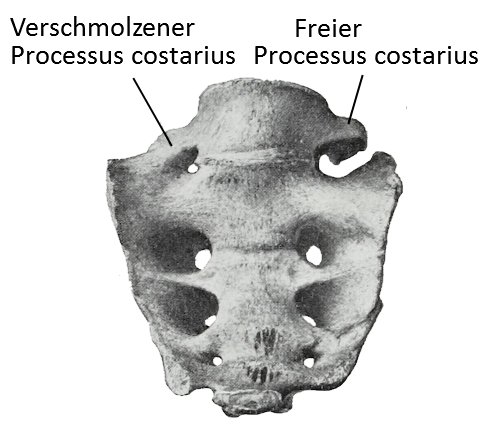Image: Sacrum, ventral view
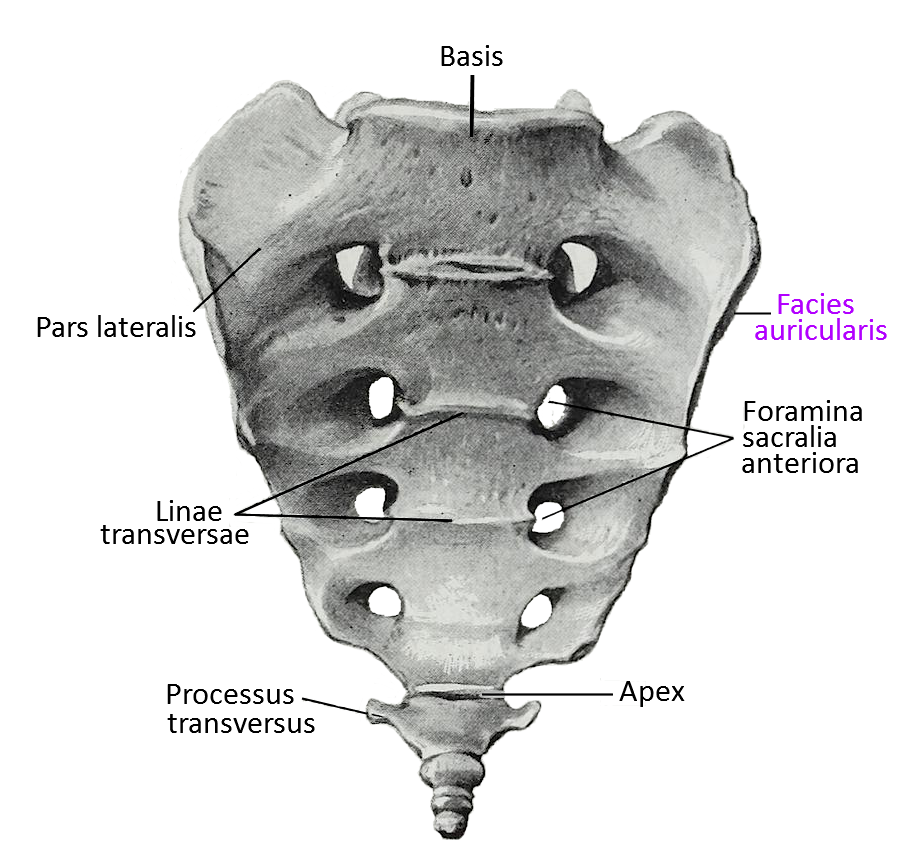
Sacrum (sacrum)
Thesacrumis the second lowest part of the spinal column, located between the coccyx as the last part of the spinal column and the lowest lumbar vertebra. The spinal column therefore rests on the sacrum. Laterally, it is connected to the hip bones via the sacroiliac joints (SIJ) and supports the partial body weight carried by the spine in the hip joints via the acetabuli of the hip bones into the lower extremity. In most people the sacrum consists of 5 fused vertebrae, but sacralization of lumbar vertebrae or lumbarization of sacral vertebrae are not uncommon, so that there can also be 4 or 6 former vertebrae that form the sacrum. The ossification of the transitions between the vertebrae of the sacrum usually begins around the age of 16 and should be completed by the age of 26.
The number of sacral foramina reduced by one indicates the number of former vertebrae that make up the individual sacrum. The crista sacralis media represents the attached spinous processes of the former vertebrae.
Base
The base of the sacrum is the cranial end, where it articulates with the first lumbar vertebra, usually L5, via an intervertebral disc. Since anatomical variations such as sacralization of lumbar vertebrae or lumbarization of sacral vertebrae are not uncommon, the lumbar vertebra above the sacrum can also be L4 or L6. Compared to the caudal lumbar spine, the sacrum is significantly flatter, which leads to the promontorium, a „mountain-like protrusion“ to the ventral-caudal side in the ventral line of the spine.
Apex (tip)
The tip (apex) of the sacrum is its caudal end, where it articulates (without an intervertebral disc) with the coccyx (articulatio sacrococcygea); this may be a true joint or a synchondrosis (synchondrosis sacrococcygea). There is no intervertebral disc here, not least because the weight of the cranial part of the body is already supported caudally by the sacrum via the hip joints.
Facies auricularis
This is the joint surface with the hip bone, i.e. the part of the SI joint on the sacrum side, in which the nutation and contranutation movement of up to 4° is possible.
Sacral foramina
The sacral foramina are the vertebral foramina from which the spinal nerves of the cauda equina emerge, which innervate some of the intestinal organs, the urinary bladder and the primary genitalia. The number of sacral foramina on one side, reduced by one, gives the number of vertebrae of the sacrum.
Promontory
The protrusion of the transition from the most caudal (usually 5th ) lumbar vertebra to the sacrum, which results from the significantly flatter position of the sacrum compared to the last lumbar vertebra.
Joints
SI-Joint (sacroiliac joint)
Thesacroiliac joint (sacroiliac articulation) is the joint between the sacrum and the hip bone.
Lumbosacral joint
The lumbosacral joint is the caudal joint between L5 and S1.
Sacrococcygeal joint
The sacrococcygeal joint (Art. sacrococcygeale) is the cranial joint to the coccyx.
Pictures
Sacrum from ventral with attachments, joints
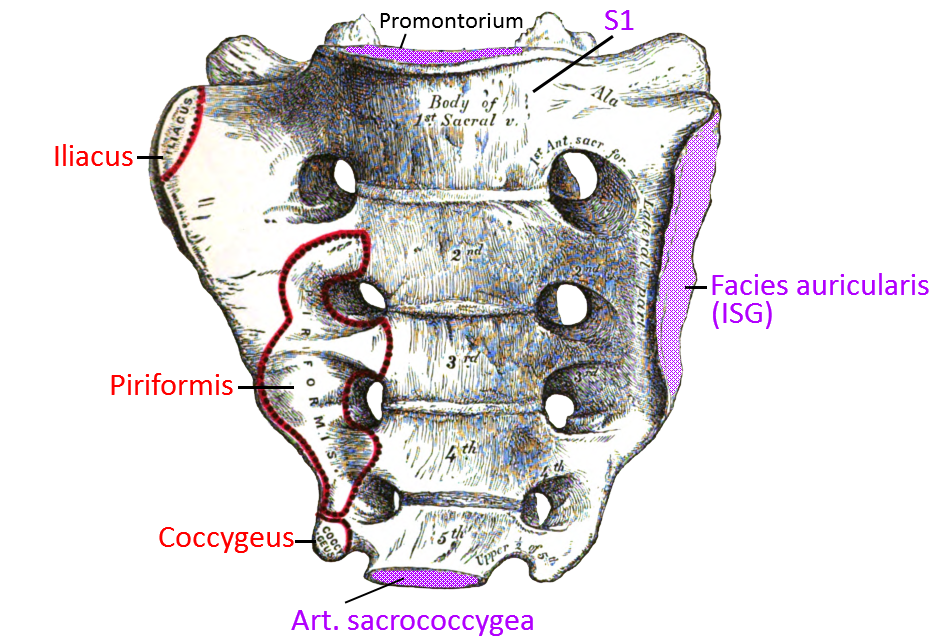
Sacrum from dorsal
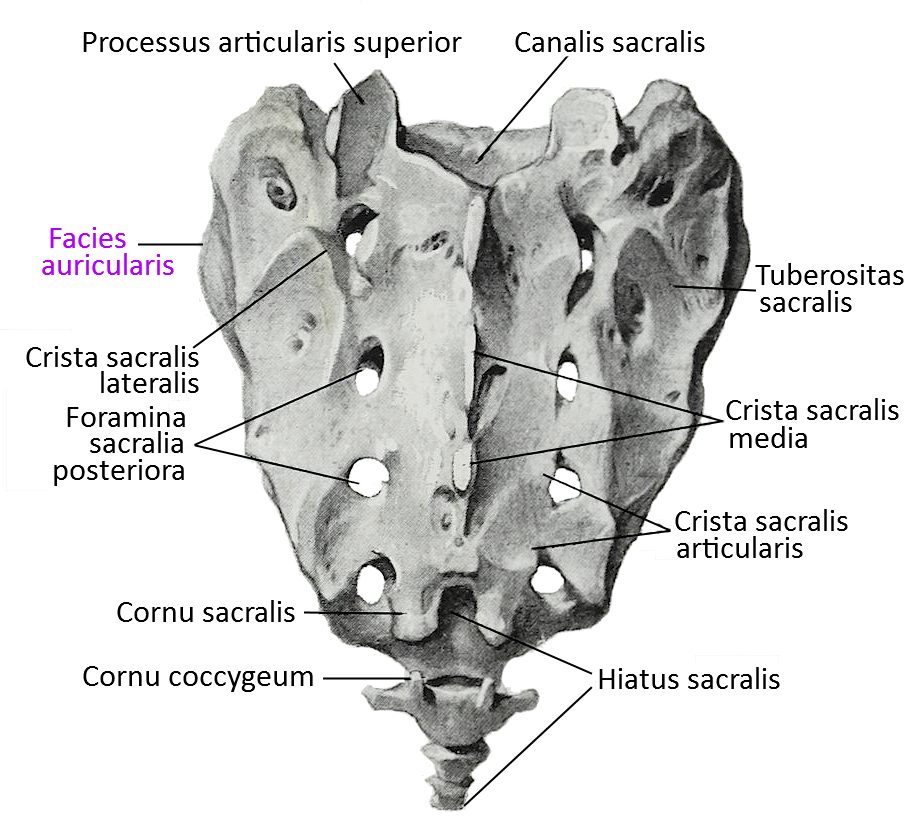
Sacrum frmo dorsal mit Ansätzen, Gelenken
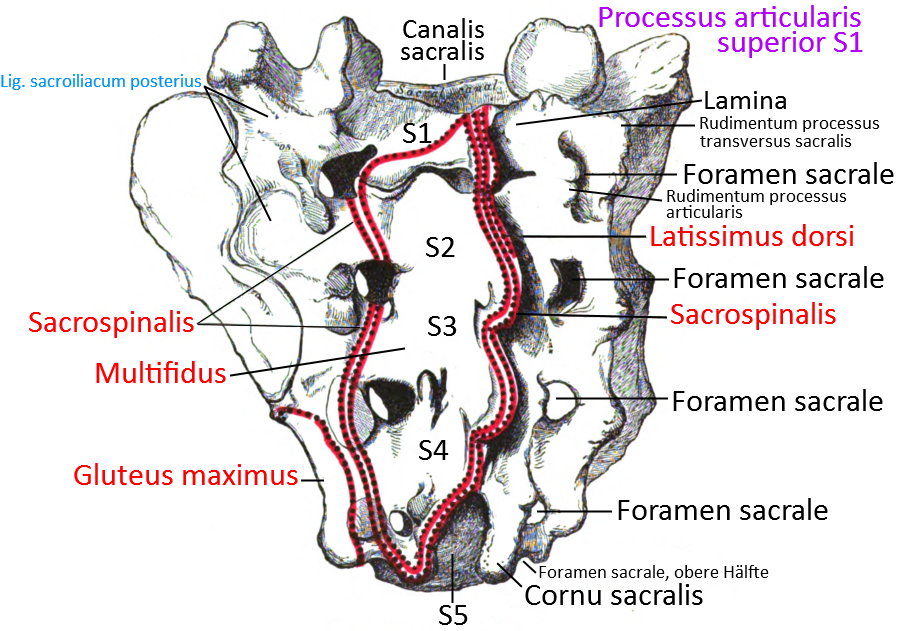
Sacrum from medial
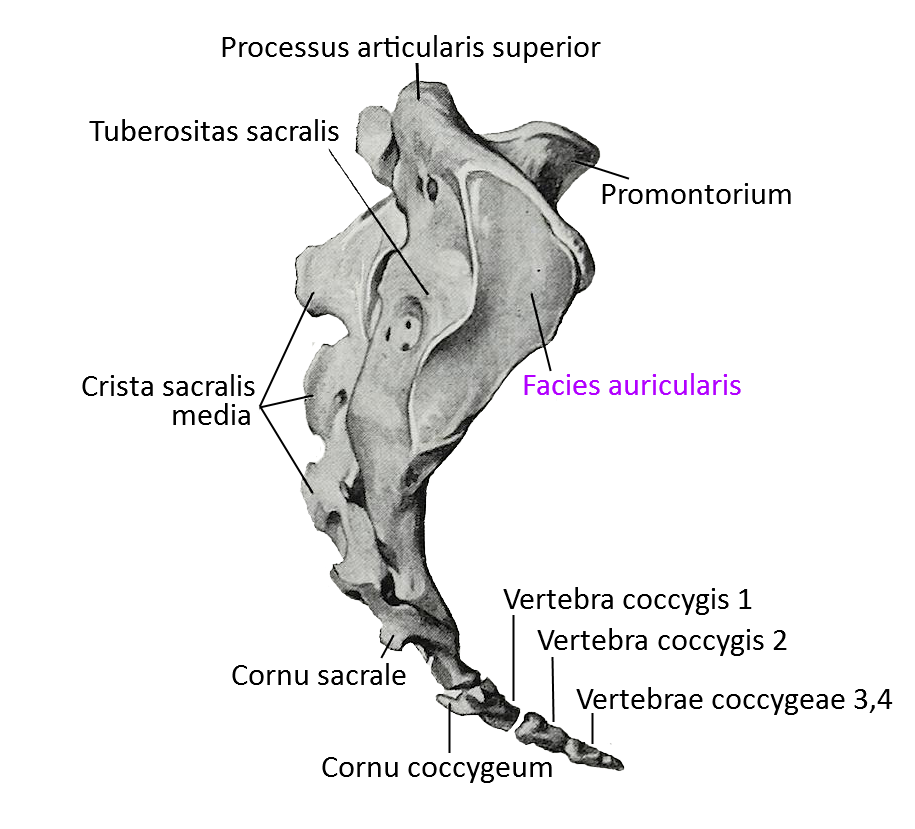
Ligaments
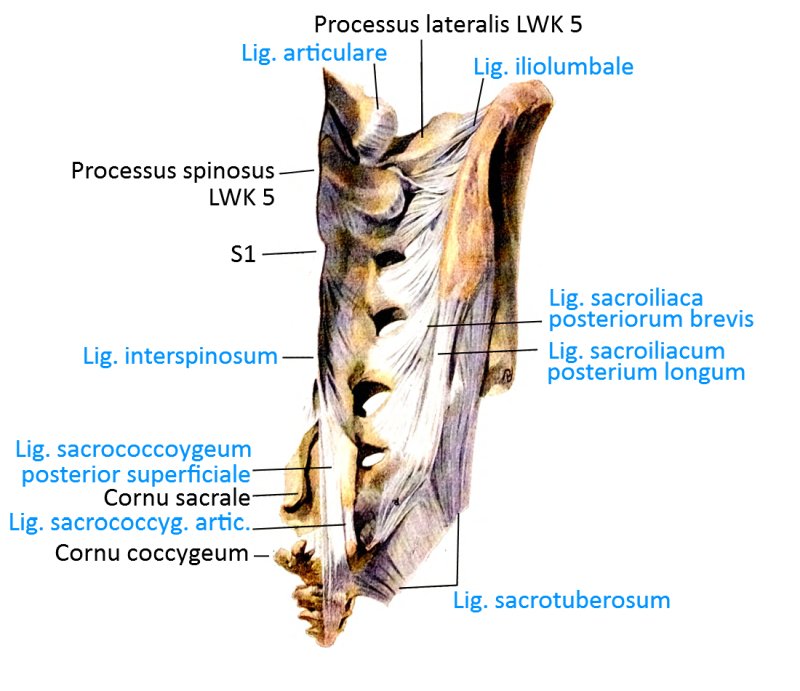
Transitional vortex
